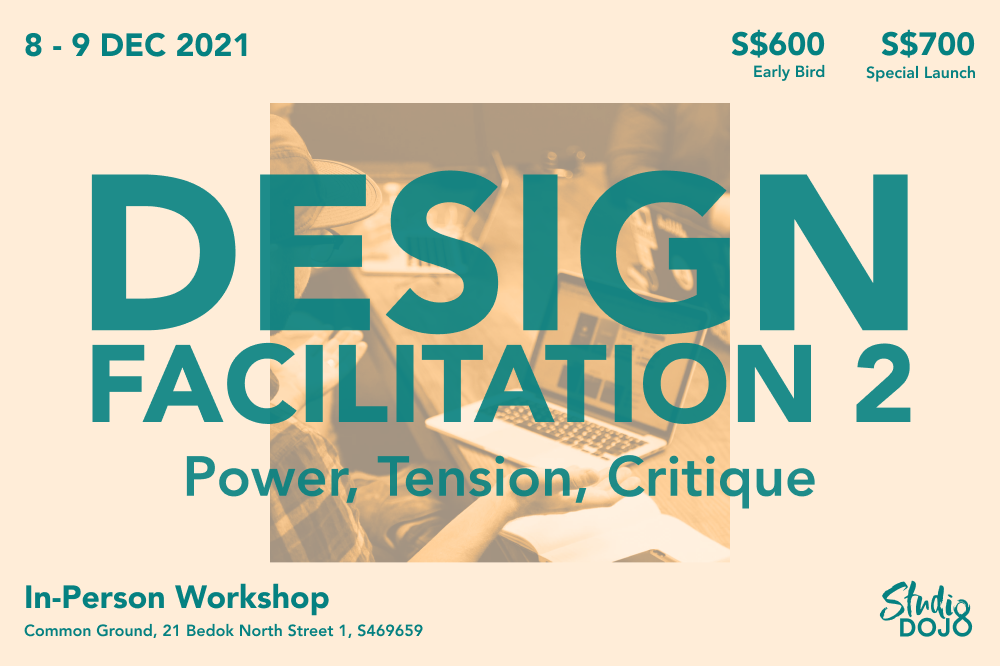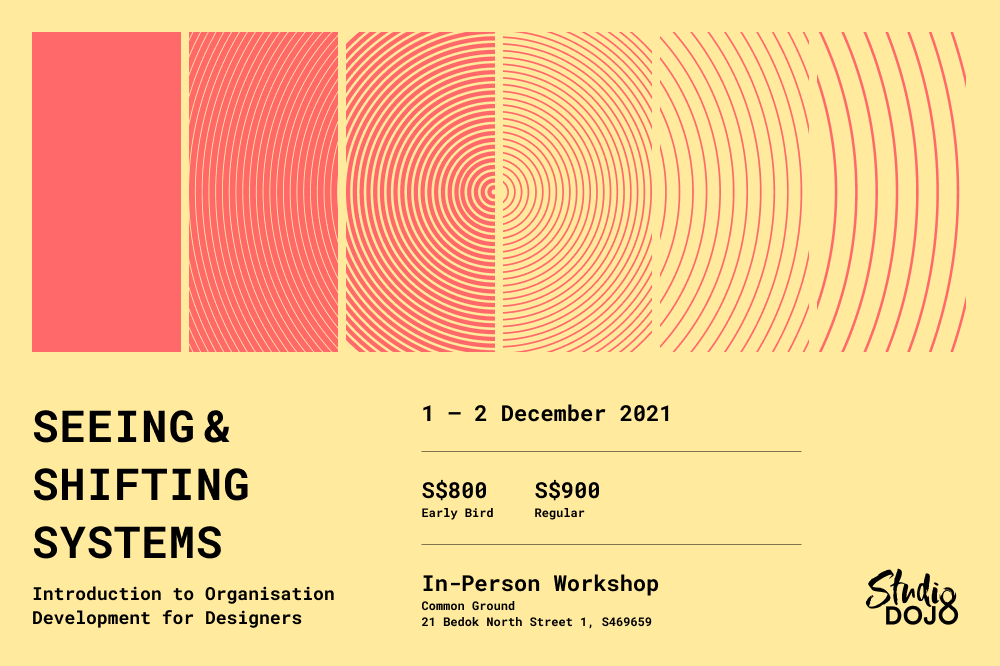NEUTRALITY
If a facilitator makes a blunder in neutrality, any tips on how to recover from it?
Yen Kai (YK): I usually apologise and call it out and I’ll ask the group if we can retract. It’s more dangerous if they can see that you are not neutral and are just humouring you.
Khai Seng (KS): Yes, I agree that I would apologise and own up. Interestingly, that can also help build trust in you. I also recover by noticing my inner critic and not letting it take control of me. I calm myself down and sometimes, make a decision to call for a short break so that I can settle myself.
Is there such a thing as being “too neutral”? For example, earlier, when the group seemed to be stuck, the facilitator did not say anything.
Both: For process facilitation, no. It’s also about listening and making the connections for the group. If not, it is just conversations that are happening. Also, holding the process does not mean you’re not neutral. If the process calls for a specific type of response, you do have to hold the participants to it. E.g. Appreciative Inquiry requires participants to word responses in a positive way. If the group is stuck, it is okay for the facilitator to check in (to ask) if they need clarification. Sometimes, the silence is just them thinking.
Sometimes the big boss, aka the sponsor or the person who initiated the workshop, is sitting in the session and making non-neutral comments. How can we manage that situation?
KS: Contract before the session. No matter how busy I may be, I’ll always catch them right before the workshop. Even if it’s meeting them at the car park as they arrive and walking with them to the venue. For a virtual event, you could bring them into a breakout room prior to having them join the main space.
YK: Agree. This must be a prevention and try not to have it as an intervention. It is part of contracting with your sponsor on this. It is also important to prepare your sponsor for such sessions as some of them may not be used to it. In the event you do need to intervene, it will take a lot of courage on your end.
If I’m new to neutrality, would it be wise to have someone observe me and give feedback?
YK: Yes, so long as they can afford the time and they are able to see (aka are familiar with the concept of neutrality).
KS: The person needs to be able to observe the nuances with neutrality, especially the tiny details like how you had to spot Yen Kai’s non-neutral actions. If not, the feedback may not be helpful to you. If you had taken this workshop on your own, you would probably begin to see how some of your colleagues who may not even be aware of what’s going on. If you had attended this workshop with colleagues, then it could possibly be a really great community of practice to spot for each other!
Is there a reason why Neutrality is so important?
YK: I realised that processes are not difficult to run but what makes the difference is the facilitator’s ability to stay neutral when running them. The processes work, what didn’t work was you facilitating it. Our goal is to have facilitators understand that neutrality is the underpinning mindset. Trust the process and allow the wisdom of the group to speak.
KS: More likely, experience of being non-neutral would be experienced after the session, when you begin to see outbursts happening. So, you may not be able to pinpoint the root cause because of the time lag.
FEEDBACK
Earlier, we talked about how the stronger the opinion you have on certain issues, the harder it is to facilitate. One way to address is to differentiate the person designing the product and the person receiving the feedback. But what if it’s the same person, which I think is quite common due to resource constraints? How do we manage the possible tensions?
YK: The feedback part – attend DF2… 😂. We spend almost two hours in that workshop talking about feedback. There is much more to consider than just receiving feedback.
KS: This is a common question posed to me. In almost all circumstances, I was able to help the person identify another partner that could be an alternate facilitator. Yes, in DF2, we also introduce two uncommon critique methods to redirect the feedback so that it’s less triggering for the receiver.
How can I stop myself from the bad habits I have developed as a facilitator?
YK: Awareness + hindsight + practise. It’s a process.
KS: Same. I describe the learning process akin to experiencing a car crash – you will realise it only after it has happened. Later on, with practice, you can see it happening in slow motion but you still can’t do anything about it. In the third stage of practice, you start to be able to slowly steer the wheel away and finally, you can avoid the crash altogether by choosing another route. Follow through with the practice diligently and you will progress through those four stages.
How do we get feedback for our facilitation, apart from recording the session to see our blindspots? Most times, I find feedback surveys to be overly polite.
KS: Observing, predicting and then seeing if that outcome happens. See if that matches your own understanding.
YK: You need to find people who are willing to be honest with you and you have to be willing to take the feedback. If not, people will stop giving you feedback.
CONVENTIONAL & PARTICIPATORY FACILITATION METHODS
How do we know when to use conventional or participatory methods? Does it depend on the users or the goal of the workshop?
YK: Firstly, remember that for all participatory methods, there must still be conventional methods. During conversations, new information will emerge. Because if you purely wanted data, you could always do it via a survey form. It is the conversations that are valuable. Secondly, if the session is about human dynamics, conventional method almost always must be used.
How do we manage conventional facilitation when we realise participants don't feel safe enough to have deeper conversations or to share more?
YK: This is part of session design. You would get information about the team dynamics when you are contracting with the person requesting you to run the session. In the situation where there is tension between members, you may want to carefully choose your processes. If you are running the session and tension happens during the session, you may want to take a break or be prepared to adjust your processes.
KS: The participants will signal to you. One person might share a little, which encourages another to share just a little more, and so, it builds. Starting off your sharing in smaller groups also helps to build safety and courage for large group sharing. If you noticed, in some of the DF1 exercises, we got you to discuss as a pair, then as a group of 4. In terms of safety, individual reflection is always safest, followed by a pair discussion, then in threes, all the way up to the whole group. Start small if you’re not sure.
Could you give some example of activities that can be categorised as conventional vs participatory? I think I’m not too clear on the distinction.
YK: Participatory would be any processes that you experienced in this workshop and those listed in the handouts. Conventional methods would be processes like participants sitting in a circle for a dialogue, or Fish Bowl where the primary mode is conversation.
DESIGN THINKING
What are design thinking facilitation sessions good for, and not suited for? It seems like design thinking is all the rage now and the preferred style for facilitating workshops.
KS: Design thinking facilitation sessions are good if your current way is not working. Design thinking is more research and people-centric, so it also requires time. Nowadays, people often run sprints but there’s actually more thinking in the design of it than in the design thinking process, there are certain criteria that should be thought through in order to get good stuff out of the design thinking process.
Is there a good group size in design thinking? And is it different for online setting?
KS: 4-6 works. The bigger the group, the longer it takes to discuss. If time is a limiting factor, you would want a smaller group.
YK: Consider 1-2-4 – give people time to jot down ideas individually, put them in pairs to discuss, then merge two pairs to share. Runs the same online and in face-to-face setting. From a process facilitation lens – you give me 2,000 people, I do 2,000 – so long as I keep going back to the objectives and time.
Interested to learn more about Design Facilitation?
Studio Dojo will be running Design Facilitation 2 on 8-9 December 2021.
Design Facilitation 2 is a 2-day workshop that builds on basics covered in Design Facilitation 1. We will delve into advanced topics such as managing power dynamics, tension, challenging behaviours, and facilitating design critique in a manner that fosters conversation.
Interested in the topic of power?
Studio Dojo will be running Seeing & Shifting Systems on 1-2 December 2021.
Seeing & Shifting Systems is a 2-day workshop introducing Organisation Development to designers. The workshop includes an experiential activity to see how top, middle and bottom layers of an organisation often act. You will also learn about Consulting Styles Matrix, a profile to raise self-awareness and see various ways you can engage with internal and external stakeholders; and Action Research, a 7-phase process to seek transformative change in organisations.


